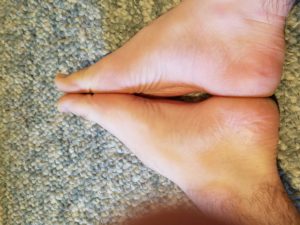Ever since I found out that the company EpiBone was working towards creating lab grown osteochondral tissue, it was obvious that they were working towards making bone tissue that will go through the natural process of chondrocyte formation, chondrocyte condensation, osteocyte differentiation, and eventual total ossification of the previously chondrogenic tissue. This process is called endochondral ossification.
The ultimate goal as claimed by the CEO is that they want to grow bone tissue that can be implanted into bone defects in a living human. Based on the claims made, the obvious corollary to this claim is that they will also be working on bone tissue that can expand and grow on their own.
The idea is like this specific situation.
A young child (8-10 years old) who still has developing and growing limbs develops cancer of the bones aka osteosarcoma. The surgeons realize that they have to remove that bone tissue that has the cancer. That bone part is taken out, which could be a rather large chunk, but the orthopedist realizes that the child has not finished growing. They need to now replace that piece of bone they took out with a new one, which can also grow in length and width along with the bone in the limbs of the kid.
Alsberg’s team as early as the early 2000 showed that it was possible to grow “growth plate like” tissue that grows volumetrically. Using that research as a stepping stone, the research team at EpiBone would be able to use the same growth factors, scaffolds, and peptides to get a growing bone-cartilage tissue in the lab.
The surgical technique of then implanting that Pseudo-Epiphyseal Cartilage tissue into the area of bone that is missing is not hard. That part where you fuse the bone edge of the implant with the edge of the originally cancerous cut bone does not need to be that difficult, although it can be technically challenging right now.
It appears that the real, true critical part that is limiting the possibility of using just stem cells and tissue engineering techniques to lengthen bone is not in the research.
It comes down to the need to fix the cut bones into alignment with each other, and not move about.
This is the entire reason why the original creator of the limb lengthening method need to ever use the External Fixators. The Fixators were always there to hold the bones in place, so that they don’t become crooked, or bent.
If we now really sat down and thought about it like a Monday Morning Quarterback aka “hindsight is 20/20”, the 2 decades of research on lengthening of bones done by Gavriil Ilisarov in the Kurgan from the 1960s to 1980s to perfect the technique of bone lengthening was bound to be successful, as long at the rate of lengthening of bone was just slow enough to account for osteogenic healing and tissue/callus formation rates. Once you realized that the bones in our body is one of the tissues in our bones with have the highest rate of healing potential in terms of broken bones over time fusing together, on a very theoretical level, there was no doubt that bones that have an external fixator that can pulls bones slowly aka lengthening would eventually heal over, resulting after say 3-6 months of tensile pulling, would result in longer bones.
Ilizarov used the Circular External Fixator to hold the bones into place. The technique for bone lengthening eventually was learned by the Germans ie at Dr. Betz, who developed his own internal fixator technique. Dr. Dror Paley developed his own internal fixator way called PRECISE. You always need some type of really strong, non-biodegradable element to hold the cut bones into place, whether it is to be placed inside the bone or attached to the bone from the outside.
The most minimally invasive method for limb lengthening surgery was developed by Dr. Bai Helong in China as early as the early 2000s, which involved a very thin method rod that is screwed to the top cut bone and the bottom cut bone, which is elongated. The rod would run in parallel to the axis of the long bone. As the metal rod is elongated through a mechanical action, the bones that the metal rod is screwed into, would elongate with the rod.
The callus that is formed in the region where the bones meet is stretched out and then reformed. This is what really happens during distraction osteogenesis. This is, and has always been the way bone lengthening actually works. Tissue that is developed between the interface of two bones, in the form of some pre-chondrogenic tissue aka “callus”, is stretched, ossified slightly, and then stretched again, until the desired lengthening of the bones finally is reached.
Notice how you always need to screw metal rods into the bones. You need the metal rods to go through the bones to give the bones enough structural strength.
This is one of the biggest issues that critics of the current bone lengthening methods have. They don’t like the idea that not only do you break the bones, but you also have to drill into the already cut bones at least in 2 different locations of the long bone, just to hold the overall long bone into position.
If an alternative to the current bone lengthening methods is ever developed, the technique will still need to hold the bones into position, without the chance of the cut bones falling apart and the legs ending up bent, or never fully fused back.
In a previous talk I had with someone over Skype, I had believed that maybe it was possible to implant some really strong bio-degradable material as a replacement to the metal rods or metal fixators.


